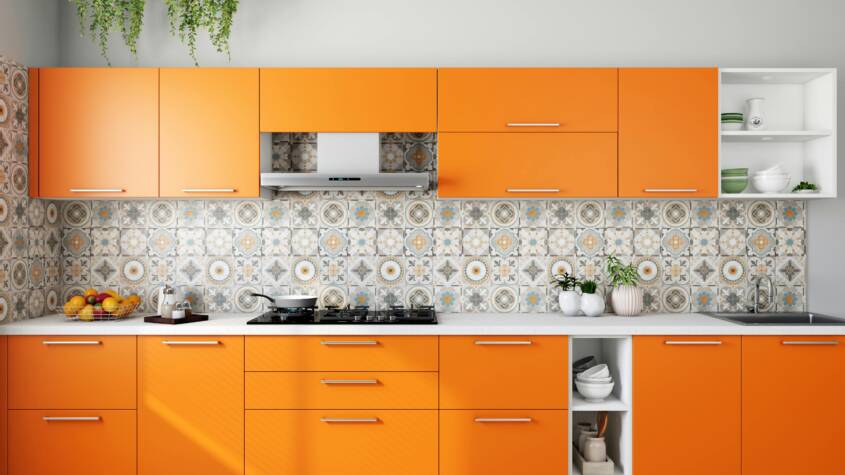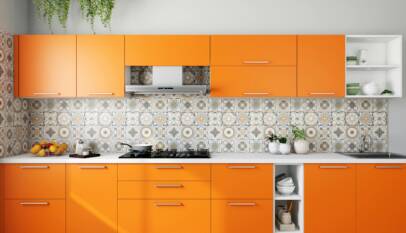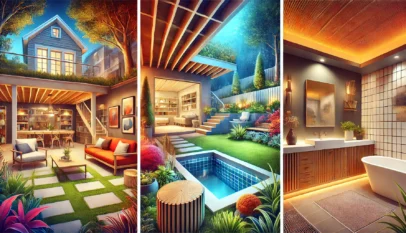Custom Kitchen Cabinets: Elevate Your Space with Tailored Designs
Custom kitchen cabinets offer a personalized touch that can elevate any kitchen space. They provide tailored solutions for storage, style, and functionality, ensuring that every homeowner can create their dream kitchen. With endless options for materials, finishes, and designs, custom cabinets meet the unique needs of each household.
Choosing custom cabinets also means maximizing space efficiency. Homeowners can take advantage of every inch, opting for features like pull-out shelves or built-in dividers, which standard cabinets may not offer. This level of customization ensures that the kitchen is not only aesthetically pleasing but also practical for daily use.
Investing in custom kitchen cabinets can significantly enhance the overall value of a home. Potential buyers often appreciate the quality and craftsmanship found in custom installations, making these cabinets a worthwhile consideration for any homeowner looking to remodel or upgrade.
Designing Your Custom Kitchen Cabinets
Designing custom kitchen cabinets involves careful consideration of personal style, material options, and functional features. A thoughtful approach can enhance both the aesthetics and functionality of the kitchen.
Determining Your Style
When designing custom kitchen cabinets, identifying a specific style is essential. Popular styles include modern, traditional, rustic, and transitional.
- Modern styles often feature clean lines and minimalistic designs.
- Traditional cabinetry may include intricate details, raised panel doors, and decorative moldings.
- Rustic styles use natural materials and finishes that highlight imperfections.
Choosing a style sets the tone for the entire kitchen. Inspiration can be drawn from home design magazines, online portfolios, or showrooms. It’s important to create a cohesive look that complements existing decor.
Choosing the Right Materials
Selecting the right materials is a key factor in custom cabinet design. Common options include hardwood, plywood, and MDF.
- Hardwood provides durability and can be stained or painted in various finishes.
- Plywood offers more resistance to warping, making it suitable for humid environments.
- MDF is often more affordable and smooth, allowing for detailed paint finishes.
Each material has unique properties affecting appearance and longevity. For instance, hardwood is typically more expensive but provides natural beauty. Researching material characteristics can aid in making an informed decision.
Selecting Color Schemes
The color scheme of cabinets influences the kitchen’s ambiance. Light colors, such as whites or pastels, tend to create a more open and spacious feel. Darker tones, like navy or charcoal, can add sophistication and warmth.
Consider the following tips when selecting colors:
- Match cabinet colors with existing countertops and flooring for a harmonious look.
- Incorporate contrasting colors for an eye-catching design.
- Use quality paint, which can enhance durability and finish.
Combining different shades can also create depth. It’s advisable to test samples in the kitchen to see how colors interact with lighting throughout the day.
Custom Cabinet Features and Accessories
Incorporating custom features enhances kitchen functionality. Popular options include:
- Pull-out shelves for easy access.
- Corner cabinets with rotating shelves maximize space.
- Soft-close hinges prevent slamming and add a touch of luxury.
Accessories also play a significant role. Items like cutlery dividers, built-in spice racks, and drawer organizers improve organization and efficiency.
The inclusion of these elements can transform cabinets from mere storage spaces into well-organized, user-friendly areas. These custom features should reflect personal cooking habits and lifestyle needs.
Planning and Installation Process
In the process of custom kitchen cabinets, accurate planning and careful installation are critical. Attention to detail in measuring, collaboration with designers, understanding manufacturing timelines, and employing professional installation techniques will lead to a successful final product.
Measuring Your Kitchen Space Accurately
Accurate measurements are essential for custom kitchen cabinets. It starts with measuring the entire kitchen area, including walls, windows, and door openings.
Key measurements to take include:
- Wall Lengths: Measure from corner to corner.
- Ceiling Height: Note any variations in height.
- Floor Space: Account for any obstructions like vents or radiators.
Using a simple tape measure is common, but a laser measuring tool provides greater precision. This collected data helps ensure cabinets fit perfectly and function effectively, enhancing both usability and aesthetics.
Working with a Professional Designer
A professional designer can bring valuable expertise to the cabinet planning process. They assist in transforming ideas into functional layouts that maximize space and workflow.
Factors to consider when selecting a designer include:
- Experience: Review their portfolio for previous kitchen projects.
- Communication Skills: A designer must understand and implement the homeowner’s vision.
- Budget Awareness: They should help you stay within your financial limits.
Collaboration with a designer ensures that the cabinets not only meet personal taste but also adhere to practical designs suitable for everyday use.
The Cabinet Manufacturing Timeline
Understanding the manufacturing timeline for custom cabinets is crucial. Typically, this process can take anywhere from 4 to 12 weeks, depending on various factors.
Key elements affecting the timeline include:
- Material Selection: Custom materials may take longer to source.
- Complexity of Design: Intricate designs require more time to execute.
- Volume of Orders: High-demand seasons can lead to delays.
Being informed about these timelines helps homeowners plan their kitchen renovation effectively and manage expectations throughout the project.
Professional Installation Techniques
Successful installation of custom cabinets hinges on skilled techniques. Proper installation guarantees cabinets remain secure and functional over time.
Key techniques include:
- Leveling Cabinets: Ensuring all cabinets are aligned to prevent gaps or uneven surfaces.
- Securing to the Wall: Using appropriate anchors and screws for added stability.
- Seamless Fit: Adjustments may be necessary for a flawless appearance, especially in unique spaces.
Hiring experienced professionals for installation ensures that the cabinets perform well and enhances durability and functionality.
Zudio Franchise: A Guide to Profitable Retail Opportunities
Zudio franchises represent an exciting opportunity in the retail sector, particularly for …











